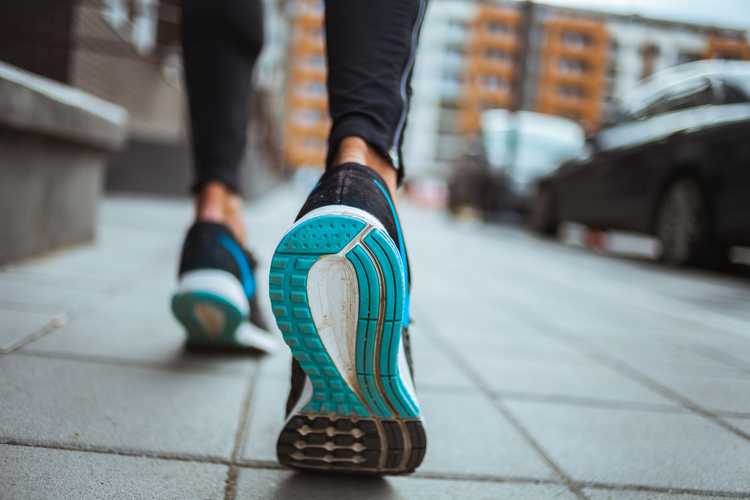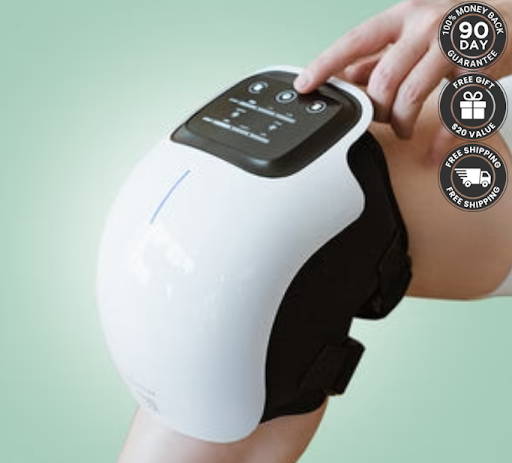

By Dr. Jeremy Campbell,
Licensed Doctor of Physical Therapy
Knee pain is a common complaint that can affect people of all ages, but with the right daily habits, it's possible to minimize or even prevent this discomfort.
Your knees are complex joints that play a crucial role in mobility, and taking care of them is essential for maintaining an active and pain-free lifestyle.
Here are ten daily habits that can help keep your knees in top shape.
Understanding the Importance of Knee Health
Before diving into the habits, it's important to understand why knee health is so vital.
Your knees bear the brunt of your body weight and are essential for most daily activities, from walking and climbing stairs to sitting and standing.
Keeping them healthy helps ensure mobility and independence as you go about your daily life.
1. Maintain a Healthy Weight

Excess weight can significantly increase the stress on your knees with every step you take.
Each extra pound adds pressure equivalent to four pounds on your knees.
Maintaining a healthy weight reduces this load, lessening wear and tear on the knee joints.
A diet rich in fruits, vegetables, lean proteins, and whole grains, while limiting processed foods and sugars, is key.
Regular check-ups and consultations with a nutritionist can also help in devising an effective weight management plan.
2. Stay Active and Exercise Regularly

Regular exercise is crucial for maintaining knee strength and flexibility.
It helps in building the muscles around your knees, which in turn provides better support and shock absorption, reducing the impact on the knee joints.
Activities like brisk walking or swimming offer low-impact options that are gentle on the knees while promoting cardiovascular health.
Regular exercise also contributes to weight management, which is beneficial for knee health.
3. Warm-Up Before Exercising

Warming up primes your muscles and joints for the activity ahead.
It increases the blood flow to your muscles, enhancing their elasticity and reducing stiffness.
This process is crucial for preventing strains or sprains around the knee area.
A warm-up routine might include dynamic stretching, which involves moving the muscles gently and gradually increasing the range of motion, preparing your knees for more vigorous activities.
4. Choose The Right Footwear

Footwear plays a critical role in maintaining knee health.
Shoes that provide adequate arch support and cushioning help in maintaining correct leg alignment, thus reducing undue stress on the knees.
When choosing shoes, consider factors like arch type, cushioning, and the kind of activities you engage in.
Sometimes, custom orthotics may be recommended to address specific foot or leg alignment issues.
5. Good Posture Matters

Proper posture ensures that body weight is evenly distributed, reducing undue strain on any one part of the body, including the knees.
When standing, your weight should be evenly balanced on both feet, and your knees should be slightly bent and not locked.
While sitting, keep your feet flat on the ground and avoid crossing your legs, which can put additional strain on the knee joints.
6. Embrace Low-Impact Exercises

Low-impact exercises such as yoga, tai chi, or Pilates are excellent for maintaining joint health.
They focus on controlled movements, balance, and flexibility, all of which contribute to stronger muscles around the knees.
These activities also improve joint mobility and can help reduce pain and stiffness associated with conditions like arthritis.
7. Hydration is Key

Hydration plays a vital role in joint health.
Water is a major component of synovial fluid, which lubricates your joints and enables them to move smoothly.
Dehydration can lead to decreased lubrication, increasing the risk of joint pain and stiffness.
Drinking adequate water throughout the day is essential, especially before and after exercise.
8. Pay Attention to Pain

Ignoring knee pain can lead to worsening conditions.
If you experience discomfort or pain in your knees, it's important to rest and avoid activities that exacerbate the pain.
Seek medical advice if the pain persists, as early intervention can prevent more severe issues from developing.
9. Incorporate Regular Stretching

Regular stretching helps maintain the flexibility of the muscles surrounding your knees.
Flexible muscles are less prone to injury and can better support the knee joints.
Stretching exercises, especially those targeting the hamstrings, quadriceps, and calf muscles, should be a regular part of your fitness routine.
Gentle, sustained stretches, held for 20-30 seconds, can significantly improve flexibility over time.
10. Enhancing Knee Care with the Nooro Knee Massager
After incorporating these daily habits into your routine, you might want to give your knees an extra boost of care.
That’s where the Nooro Knee Massager comes into play.
By dedicating just 15 minutes a day to this innovative device, you can significantly enhance your knee health and comfort.
The Nooro 3-in-1 Knee Massageris an exceptional tool for those struggling with knee pain or osteoarthritis.
It ingeniously combines Red Light Therapy, Heat Therapy, and Massage Therapy to offer temporary relief from joint aches, pain, and stiffness.
Incorporating the Nooro Knee Massager into your daily regimen can provide that extra layer of care and comfort for your knees.
It’s a simple yet effective way to enhance the health of one of the most crucial joints in your body, ensuring you stay active and pain-free.
Conclusion
Adopting these ten habits can significantly improve your knee health and help prevent pain.
It's important to remember that knee care is a continuous process.
Consistently practicing these habits will not only alleviate existing knee pain but also prevent future issues, allowing you to enjoy an active and fulfilling lifestyle.
Remember, it's never too late or too early to start taking care of your knees!



